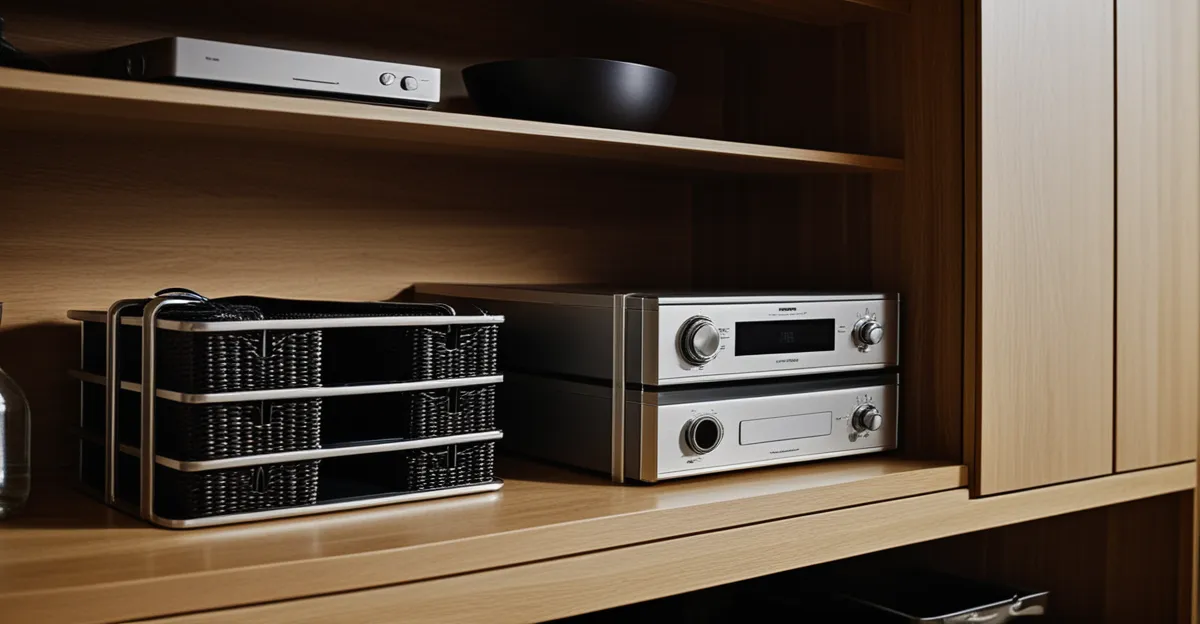Practical strategies for maximising storage in small spaces
Maximising storage in small spaces starts with assessing your storage needs and decluttering effectively. Begin by identifying items you truly use and enjoy; this clears unnecessary clutter, allowing storage solutions to function better. Decluttering also reveals which belongings require storage and which can be donated or discarded, setting a foundation for organising small spaces efficiently.
Next, prioritise multifunctional furniture to make the most of limited square footage. Furniture that doubles as storage—such as ottomans with hidden compartments or beds with built-in drawers—optimises small spaces by combining seating, sleeping, and storage roles. This practical storage tip not only saves space but enhances room functionality.
Also to read : How Can UK Homeowners Maximize Sustainability in Their Living Spaces?
Equally important is implementing adaptable storage systems that provide flexibility as needs evolve. Modular shelves and adjustable racks can be rearranged or expanded, making them ideal for dynamic spaces. Using storage units that can shift in size or function ensures you meet changing requirements without overcrowding your home.
Together, these strategies form a comprehensive approach to small space storage solutions, helping you craft organised, efficient, and clutter-free environments.
Topic to read : How can you design a child-friendly yet stylish UK home?
Innovative storage ideas for specific rooms
When focusing on small apartment storage, tailoring solutions to each room maximises efficiency and usability. In bedrooms, employing under-bed storage is one of the most effective small space storage solutions. Drawers or bins slid beneath the bed utilise otherwise wasted space for items like seasonal clothing or extra linens. For added functionality, consider wall-mounted organisers. These clear floors and work well for accessories, books, or everyday essentials, adapting seamlessly as needs change.
In kitchens, vertical shelving greatly aids kitchen organisation. Tall shelves or open racks take advantage of height, freeing up counter and cabinet space. Custom cabinets can be designed to suit unique layouts, providing tailored compartments for pots, pantry items, and utensils. These practical storage tips address the frequent challenge of cramped kitchen areas, turning them into efficient workspaces.
Living rooms and multipurpose areas benefit from modular shelving and concealed storage options. Modular units can be configured to fit different spaces while serving as display areas or bookcases. Concealed storage, such as built-in cabinets or furniture with hidden compartments, reduces visual clutter in these social spaces. Altogether, these room-specific strategies are key to optimizing small spaces with targeted, flexible storage.
Practical strategies for maximising storage in small spaces
Maximising storage in small spaces demands a strategic blend of assessment, multifunctionality, and adaptability. Start by thoroughly assessing storage needs to identify which items require dedicated space. Effective decluttering refines this process by removing non-essential belongings, allowing for a clearer understanding of storage priorities. This approach ensures that your small space storage solutions are targeted, avoiding overcrowding and promoting order.
Prioritising multifunctional furniture stands out as a cornerstone in optimizing small spaces. Furniture pieces such as beds with integrated drawers or ottomans that conceal storage combine essential functions, reducing the need for separate storage units. These practical storage tips enhance spatial efficiency by merging utility with comfort, effectively doubling the use of limited square footage.
Moreover, implementing adaptable storage systems provides flexibility crucial to evolving needs. Modular shelving units and adjustable racks can shift configuration or size, making them ideal for personalised storage that adapts as belongings or lifestyle change. This adaptability helps maintain organisation and prevents bulky, fixed storage from dominating the space.
Together, these strategies—assessing needs, embracing multifunctional furniture, and adopting flexible storage systems—form a robust framework for effective small space storage solutions. Each element contributes to optimizing small spaces with practical, long-lasting storage approaches.
Practical strategies for maximising storage in small spaces
Effectively assessing storage needs is the foundation of all small space storage solutions. Begin by categorising your belongings: what must be readily accessible, what can be stored away for occasional use, and what can be discarded. This detailed evaluation prevents overcrowding and helps tailor your storage approach specifically to your lifestyle. Decluttering complements this assessment by removing excess items that consume valuable space, enabling more efficient organisation.
Following this, emphasise multifunctional furniture designed to provide practical storage tips for limited areas. For instance, a sofa with built-in storage compartments or a coffee table with hidden drawers blends seating and storage seamlessly. Such pieces serve dual purposes without requiring additional room, contributing directly to optimizing small spaces. This strategic choice reduces clutter by integrating storage within items you use daily.
Lastly, adopt adaptable storage systems to future-proof your space. Modular units, adjustable shelves, and stackable containers offer flexibility, allowing adjustments as storage requirements shift over time. This dynamic approach avoids rigid setups that might not suit evolving needs. Overall, these three strategies—precise assessment and decluttering, prioritising multifunctional furniture, and choosing adaptable systems—provide a clear, effective path to maximising storage in even the smallest living areas.



